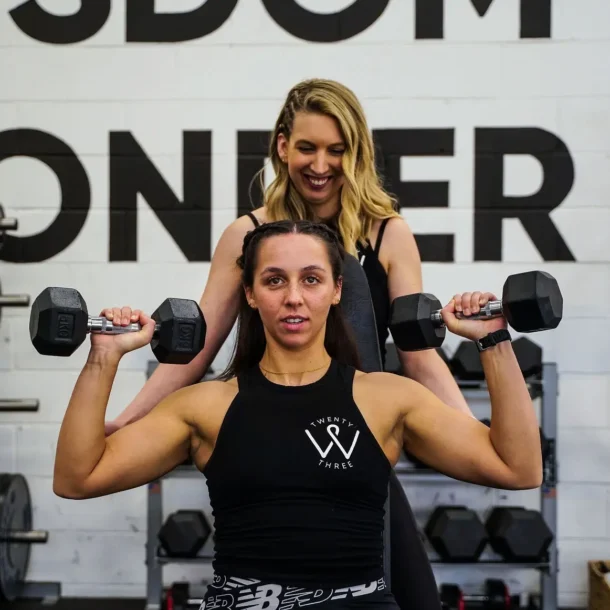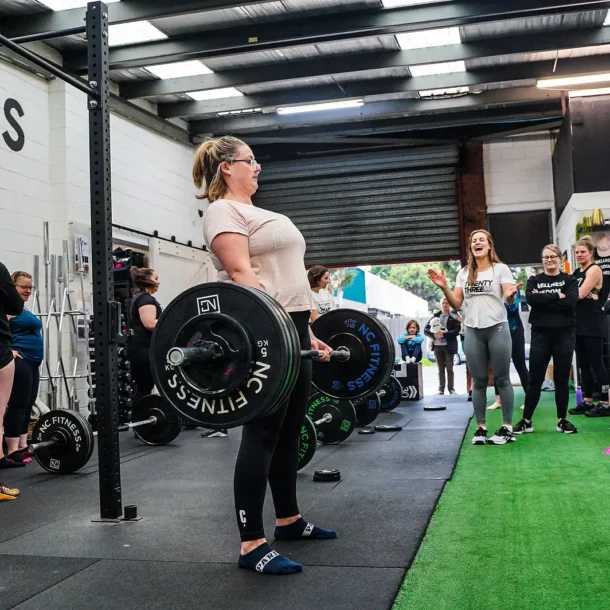

You have probably heard it before. You must increasing your protein intake if you are trying to drop body fat and see visible changes in your body composition.
Regardless if you choose high fat, low carbs, a moderate carb/ low fat diet or cycle you carbs, consuming a consistent quantity of protein everyday should be your focus.
So women are surprised to hear that when you start to lift weights, your daily intake of protein must increase too. The reason is simple. Your training is breaking down the muscle tissue and in the recovery phase your body needs more protein to not only recover muscle cells but assist in the rebuilding and remodelling process.
Why is protein so important?
Protein is made up of amino acids, which are the building blocks for all body tissue including muscles, hormones, neurotransmitters and more. Your body needs 20 different types of amino acids, 9 of which your body is only able to get from the food you eat.
When you exercise, your body not only needs to repair and grow skin, hair and hormones, it also needs to go the extra mile to synthesis muscle tissue.
How much extra protein does the body need?
An example of this is if you weigh 70 kilograms, you should be having 105-140 grams of protein per day. This should equat to 30-40% of you daily intake, if you are trying to cut body weight.
Keep in mind, however, that this is the recommendation for the average, individual. If your’re exercising more frequently, you are breaking down more muscle tissue and therefore your protein intake will increase.
If you are actively trying to loose fat mass, remember that creating an energy deficit is the most important aspect of your plan. An energy deficit of 15-20% is recommended to see changes in body composition over time. However, a good weight loss program will promote the retention of muscle mass in the process. Focusing on calories alone, will ususaly mean that you will be fighting an up hill battle between recovery, maintaining a health immune system and preservation of muscle. Remembering that the more muscle mass you can build will ultimately help your weight loss endeavors to be more sustainable and increase your bodies ability to burn fat.
Understanding where to start- Use our 4S Plan
Implementing the simple strategy of consuming more protein is the best place to start. You should start by building every meal around your protein source and have a readily available tool to measure it. Then follow these simple steps.
Serving Size- Understand that a protein serve is around the same size as the palm of your hand- this is usually around 20-30 grams.
Set a target- Set yourself a target to consume 3-5 palm sized portions of protein per day. 5 serves x 20-30 grams = 100-150g.
Not sure how much protein is in the foods you eat? Download our guide on what 20g of protein looks like here.
Sources- Consume a variety of protein sources, from red meats, white meats, fish, soy products, beans, eggs, dairy, legumes and more. This will ensure that you are not only hitting your protein target but also getting a large variety of other nutrients and fats.
Strategy- You are not going to hit your target without preplanning ahead. At the start of each week, ensure that your fridge is filled with a variety of protein sources. Some of these should be cooked and ready to eat.
| Ready to Cook | Ready to Eat |
| 1 kg Chicken Breast | Slow cooked meal of choice |
| Pack of Individually portion fish piece in freezer | 1 kg poached chicken breast |
| Pre-planned freezer bag with a slow cook recipe such as a curry. | Greek Yogurt |
| 300g Tofu | Nut Butter (my favourites are peanut butter and almond butter) |
| 2 dozen eggs | Cottage cheese or reduced fat Philadelphia cream cheese |
| Lentils and beans | 3 Bean Mix |
| Boiled Eggs |
What does this look like across a day?
Breakfast- 2 egg omelette with 1 egg white (choice of vegetable) = 25g
Lunch- Baked Sweet Potato with Poached Chicken = 28g
Dinner: Spicy Beef Vindaloo = 30g
Snack One: 1 cup of Cottage cheese with strawberries and honey = 20g
Snack Two: High Protein Bean Dip with veggies = 8g
TOTAL PROTEIN = 108g
To summarise, if your results have plateau and you need a simple strategy to help accelerate your results, a quick protein check could be the answer. Not only will this assist with your recovery, you will find that the extra protein will help to stabilise you energy and appetite, burn more calories (due to protein’s higher thermic effect), safeguard against muscle loss while boosting your immune system.
Do you need more help with meal planning? Download a free meal plan here.

Ange Drake is an personal trainer, women’s empowerment coach and fitness blogger in the northern suburbs of Melbourne. She is the director of one of the few womens’ only strength training gyms in Melbourne, 23W. Ange helps women to learn how to use strength based training, nutritional strategies and a positive mindset to transform their bodies, relationship with food and mind.
Can’t decide which of our packages is best suited for you? Take our questionnaire to help you decide!





